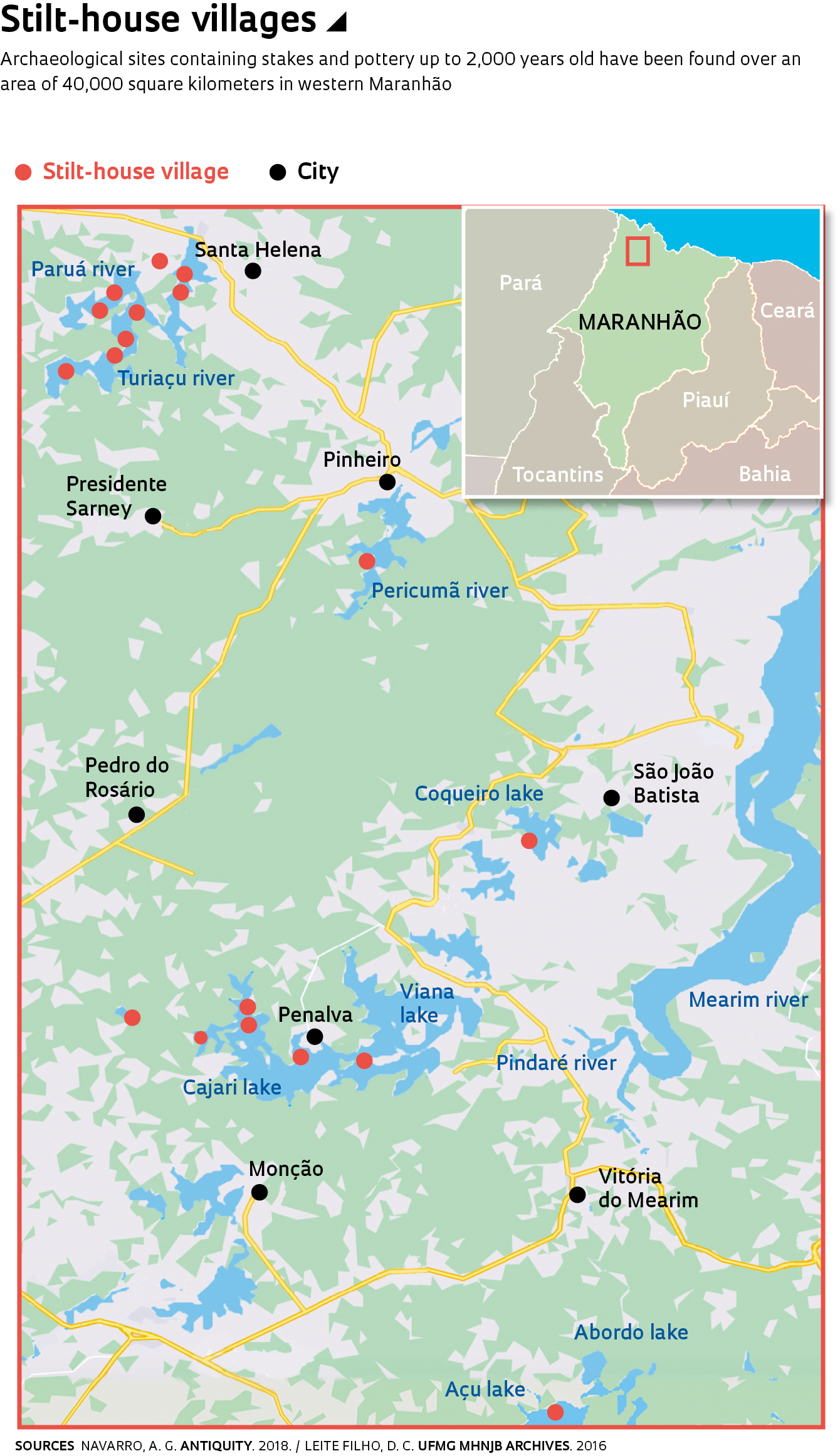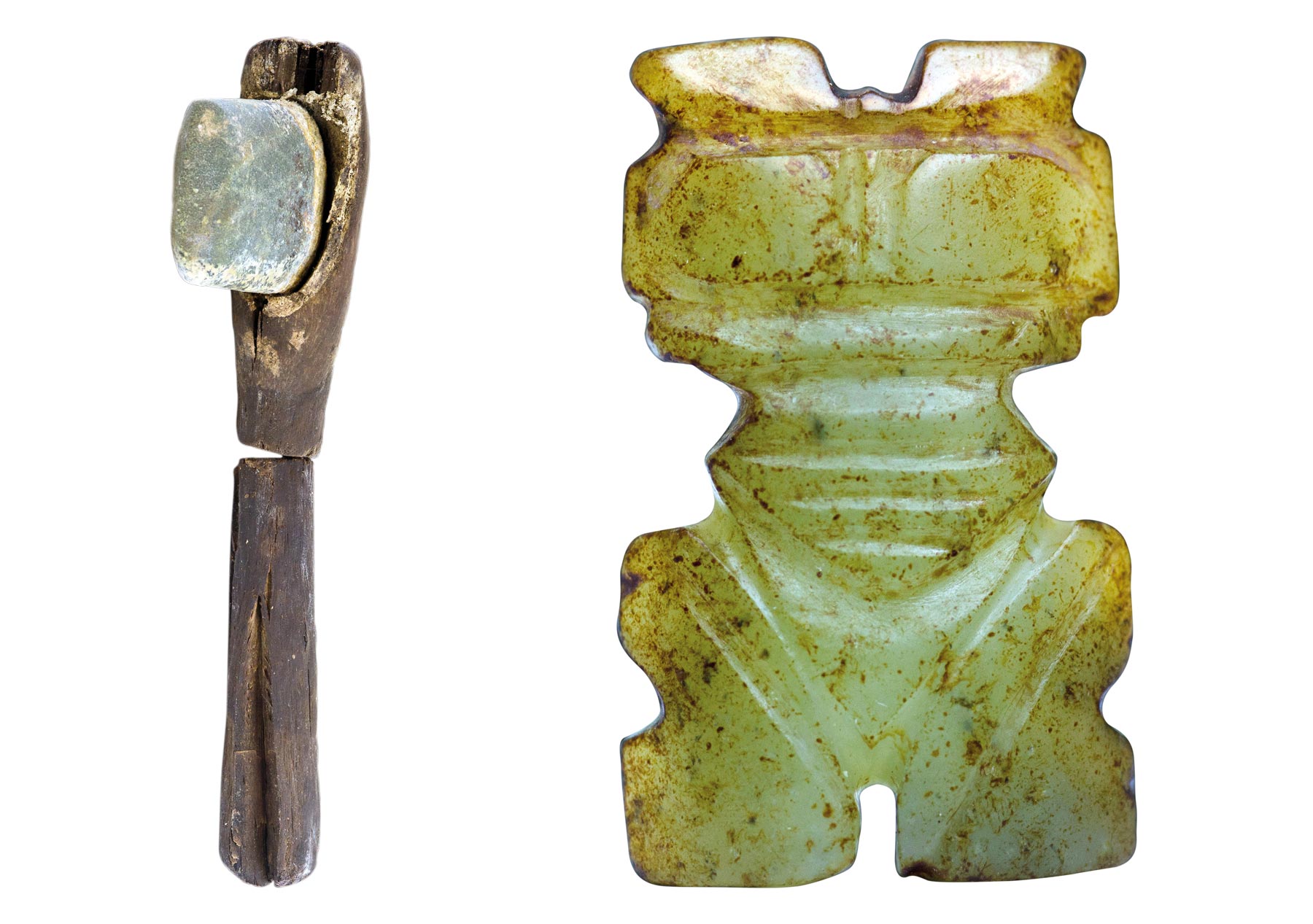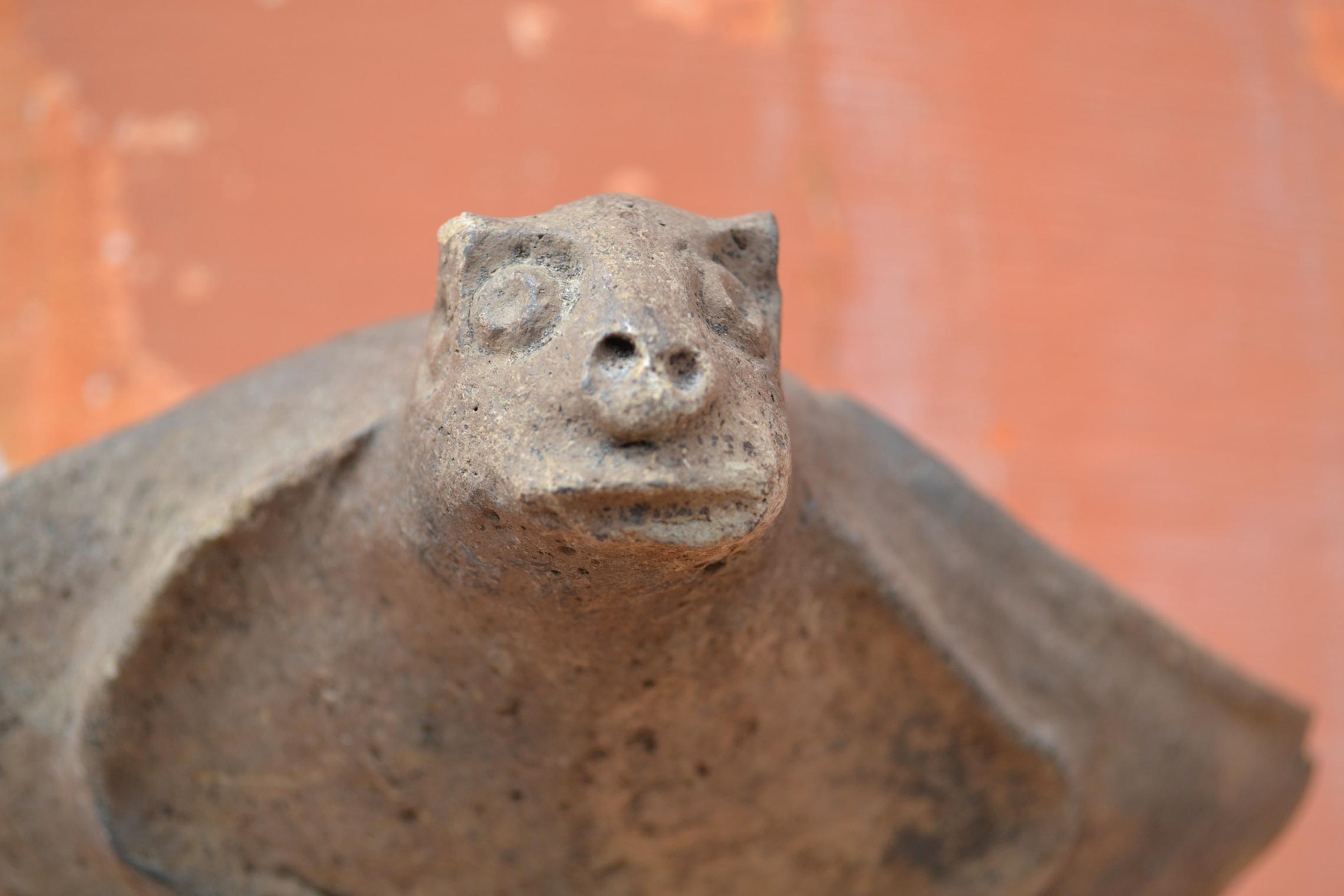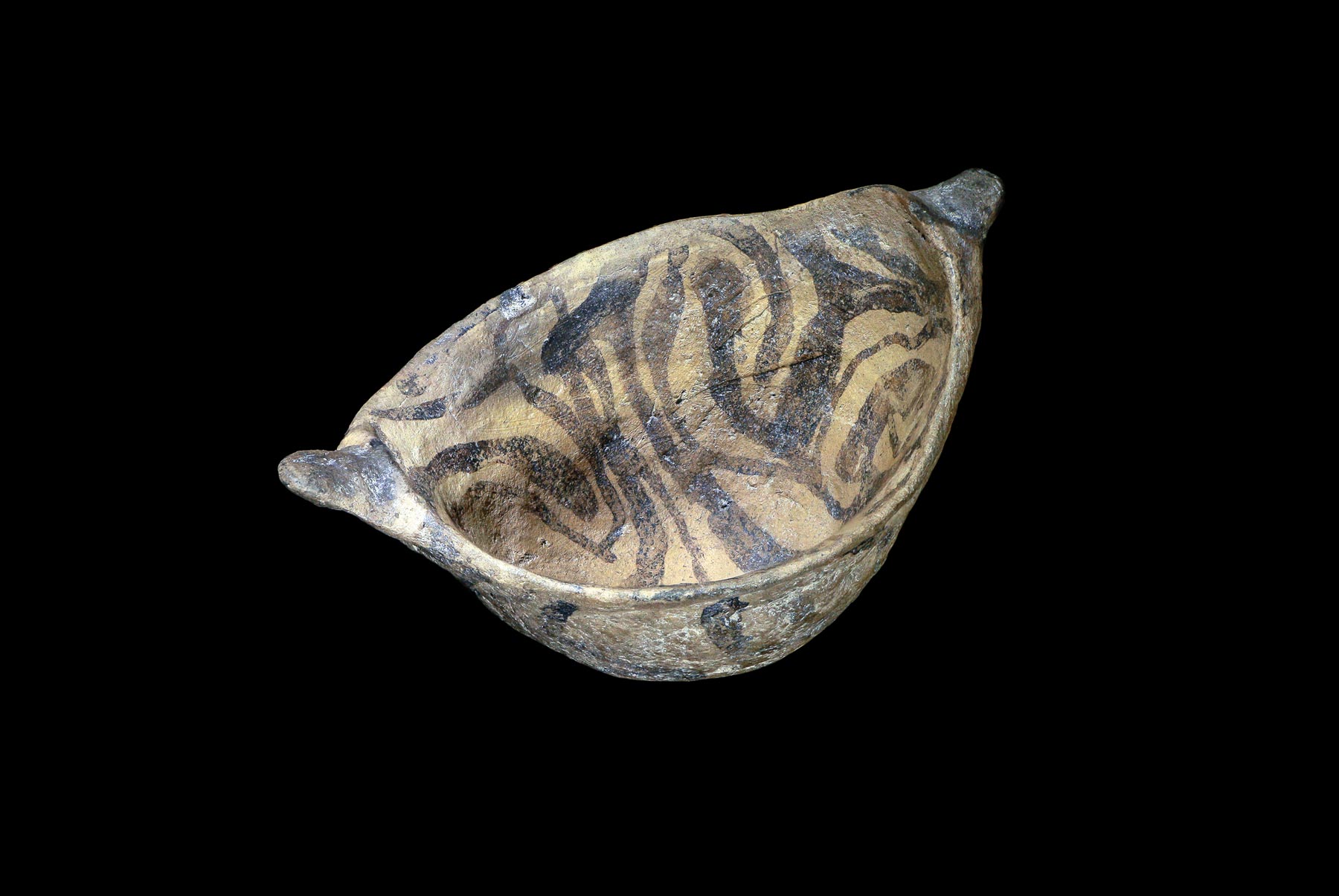For almost 1,000 years, the gently undulating landscape of western Maranhão was home to a group of native South Americans who lived on the water. Still of unknown identity, this indigenous group built stilt-houses on rivers and lakes where they were protected from enemies and lived on a diet of turtles, fish, and babassu fruit. Well-preserved remains of these settlements have been found across 40,000 square kilometers (almost the size of the entire state of Rio de Janeiro) in areas where the Pindaré, Pericumã, and Turiaçu rivers widen and overflow into neighboring floodplains during the rainy season, which lasts from January to June. The remnants of this native group, which disappeared before Europeans arrived in the Americas, suggests that they were skilled ceramists that probably traded goods and knowledge with other groups in the Amazon and Caribbean. Known as estearias, the stilt-house villages of Maranhão were first discovered almost 150 years ago, but have only recently been properly studied.
Archaeologists working in the region have differing opinions on the size and social structure of the groups that lived in these settlements. According to Alexandre Guida Navarro, manager of the Archaeology Laboratory at the Federal University of Maranhão (LARQ-UFMA), the largest estearias may have been home to thousands of people who followed the command of one leader. Other researchers, such as Deusdédit Carneiro Leite Filho, director of the Maranhão Natural History and Archaeology Research Center (CPHNAMA), associated with the State Department for Culture and Tourism, say there is not enough data to know whether entire estearias were occupied all at one time or whether the inhabitants formed smaller communities that periodically moved to neighboring areas.
A detailed map of four of the nearly 20 estearias in Baixada Maranhense, a wetland region in the east of the Legal Amazon, was published in the journal Antiquity in December 2018. In the article, Navarro describes the spatial structure and probable dates of occupation of these villages in Boca do Rio, Cabeludo, Caboclo, and Armíndio, all located on a stretch of the Turiaçu river near the municipality of Santa Helena, 200 kilometers (km) west of the state capital, São Luís.

Between 2013 and 2017, Navarro visited the four villages in the dry season, when it is possible to walk on the riverbed and dried-up lakes. Using GPS and a total station (a device that measures angles and distances), Navarro recorded the distribution of the stilts on which the houses were once erected. He also marked the exact locations from which he collected some 8,500 ceramic fragments, as well as wooden and stone objects.
Many people in Africa, Asia, and some parts of the Americas still live in stilt-homes today, but in prehistoric times, it was rare outside Europe. “Baixada Maranhense is the only place in Brazil where archaeological remains of this type of construction have been found,” says Navarro. “Although the estearias have been known about for a long time, little is known about the culture of the people who lived there,” says Leite Filho.

Áurea Costa
Axe with stone blade and wooden handle found at the Cabeludo site, and jade muiraquitã recovered from the Boca do Rio siteÁurea CostaChiefdoms or simple villages?
In the area surrounding the Turiaçu river, the two largest and most complex structures roused the most interest—Cabeludo and Boca do Rio. In Cabeludo, Navarro identified 1,150 stakes over an area of 7,400 square meters (m2)—slightly smaller than an average city block—on the bed of the Paruá river, a tributary of the Turiaçu. Many of the stilts are grouped in a large, rectangular center, 15 meters (m) wide by 55 m long, which may have been connected to seven smaller clusters by bridges. The Boca do Rio site 10 km to the south has 1,071 stakes across 6,000 m2 of the Turiaçu river channel, where again a large central grouping is surrounded by four smaller bunches. During her postdoctoral fellowship, supervised by Navarro, forest engineer Thaís Gonçalves found that the stilt foundations were made of hard woods such as ipe. Dating of the stakes suggests that the two settlements were contemporaries and existed well before European colonization.
“The stilts at these two sites were not placed randomly,” Navarro says. “They are arranged into villages that could only have been built by a large number of people collecting long tree trunks under the command of a chief,” he says.
With a much smaller number of stakes (between 140 and 160), the Armíndio and Caboclo sites are organized more simply, with no obvious center. These two estearias are more similar to the stilt-house villages built by the Warao people in Guyana, Suriname, and Venezuela since before the Age of Discovery. They comprise a more modest group of smaller and simpler houses. “Before European colonization, what is now Brazil was occupied by a diverse array of ethnicities, and the Maranhão estearias are another example of how different forms of land occupation coexisted,” says archaeologist Pedro Paulo Funari, a professor at the University of Campinas (UNICAMP).

Deusdédit Leite Filho / CPHNAMA
Ceramic ornament shaped like a bat’s headDeusdédit Leite Filho / CPHNAMANavarro believes the large hubs at the center of the Boca do Rio and Cabeludo sites functioned as village squares; collective spaces where residents held ceremonies and celebrations. Away from these squares, the smaller and simpler constructions would have been huts where one or more families lived.
The locations of ceramic objects found in the larger settlements reinforces this opinion. The most elaborate items—statuettes and objects with appliqués and incisions, sometimes painted in red, black, and white—are most commonly found in the central squares. Researchers have also found ceramic figures shaped like animals (owls, monkeys, turtles, and toads) and female figurines, some with apparent genitals and breasts. Many of the human figures have had their heads removed, which according to Navarro, indicates termination rituals. “By breaking the head off the statuettes, a common form of this ritual, the life of the object is ended as well as the ceremony in which it was involved,” explains the archaeologist, whose work is funded by the Brazilian National Council for Scientific and Technological Development (CNPq) and the Maranhão Scientific and Technological Research and Development Foundation (FAPEMA). In the smaller villages, the objects were simpler, possibly used to store and prepare food.
“These lake cultures show both similarities and differences with other Amazonian cultures,” said American archaeologist Anna Roosevelt, an anthropology professor at the University of Illinois, USA, in an email to Pesquisa FAPESP. “Some of these groups appear to have developed regional cultures consistent with evidence of complexity.” In anthropology, the complexity of a society increases as its population grows and more hierarchical power structures arise.

Fábio Matta
A vase decorated like a turtle shellFábio MattaAnna Roosevelt, the great-granddaughter of former American president Theodore Roosevelt (1858–1919), conducted several expeditions to the Brazilian Amazon in the 1980s and 1990s and identified one of the region’s oldest settlements: the Pedra Pintada cave in the state of Pará, home to indigenous American peoples roughly 11,000 years ago. Having studied refined polychrome pottery (painted in red, black, and white) from Marajó Island, she theorized that Amazonia may have been home to large human settlements of intermediate complexity called chiefdoms, where thousands of people lived under the influence of an indigenous chief. Her proposal ran contrary to the prevailing theory of the time, suggested by another American archaeologist, Betty Meggers (1921–2012), who believed the Amazon was a huge demographic and cultural void (see Pesquisa FAPESP issue no. 136).
The dates presented in the Antiquity article suggest that the Turiaçu river estearias were occupied between AD 770 and 1,100, around the peak of the Marajoara culture, which arose around AD 400. Navarro, however, reports that more recent and as yet unpublished dating of the stilts, ceramics, and coals suggests that these settlements originated in the first century AD.
“The beautiful pottery of the Turiaçu basin shows clear similarities with that found in Marajó,” says Anna Roosevelt, who visited the estearias of the Turiaçu river with Navarro in January and December of 2018. “As we know very little about the early stages of the Marajó polychrome culture, it is possible that this type of painting first emerged in Maranhão before arriving in Pará,” suggests the archaeologist.
Pottery from the estearias features distinct decorative patterns and painting techniques
As well as producing a variety of elaborate ceramics—74 different types of vases were identified at the Turiaçu river sites—the people of the Maranhão estearias may have been part of a trading network that interacted with other distant cultures. One piece of evidence of such interactions is a jade muiraquitã found in the central square of the Boca do Rio site in 2014. Discovered between pottery fragments and stone objects such as axe blades, the green frog-shaped amulet was sculpted in nephrite, a type of jade found in Costa Rica, according to an article published by Navarro and others in the Emílio Goeldi Museum of Pará Bulletin in 2017. A symbol of power or magical healing, the Boca do Rio muiraquitã has human-like eyes and a kind of split crown or antennae on its head. These features, according to Navarro, are uncommon in the Amazon, but are often seen in amulets from the Nicoya culture, Costa Rica, and other Caribbean peoples.
The muiraquitã from Boca do Rio is not the first to be found in the stilt-house villages of Maranhão. Almost a century earlier, local geographer Raimundo Lopes (1894–1941) discovered three other examples at archaeological sites near the municipality of Penalva, about 110 km south of the Santa Helena villages. Born in Viana, a town near Penalva, Lopes knew about the estearias since he was a teenager. In 1872, engineer Antônio Bernardino Pereira do Lago, who was drawing a topographic map of Maranhão, had identified signs of one of them near Viana, in a dry area of the Cajari lake. Lopes became convinced of the importance of these villages when a drought in 1919 once again exposed the stakes in Lake Cajari. In the same year, he measured the layout of the Cacaria settlement in Penalva and began collecting archaeological material, which was later stored at the National Museum in Rio de Janeiro—and may have been lost in the fire of 2018. After finding the muiraquitãs in Penalva, Lopes proposed that the people who lived in the stilt-houses had connections with the Marajoara culture and Caribbean peoples.
Differing views
In the 1970s, archaeologists from the Emílio Goeldi Museum of Pará, led by Mário Simões (1914–1985), visited the Cajari estearias to resolve “the controversies regarding the origin and antiquity of cultural artifacts discovered by Raimundo Lopes in 1919,” as Simões wrote in the scientific journal Acta Amazonica in 1981. The Goeldi Museum team collected ceramic fragments, stone artifacts, and pieces of coal. A single analysis dated the material as from around the year 570 AD. Simões and his team concluded that although the Cajari culture existed at the same time as other peoples on Marajó Island, there was no connection between them, contrary to current theories proposed by Navarro and Roosevelt.

Deusdédit Leite Filho / CPHNAMA
Aerial image shows near-parallel lines of stakes at the Casca de Coco site in the Coqueiro lakeDeusdédit Leite Filho / CPHNAMAAnother scholar who sees few similarities between Marajoara pottery and the objects found among the stilt-house villages is archaeologist Deusdédit Leite Filho. Born in Baixada Maranhense, he has been studying the estearias in the Pindaré, Pericumã, and Turiaçu rivers for almost 20 years. Based on his own observations, he is in agreement with Simões that the ceramics in these locations have their own unique features. André Prous, a professor at the Federal University of Minas Gerais (UFMG) and a leading expert on prehistoric Brazil, also believes the pottery features original decorative patterns and painting techniques, although some pieces appear to have been influenced by the Tupi-Guarani culture.
“There is a wide variety of types, shapes, colors, and designs. Some have a part shaped like the head of a fish, and the liquid comes out of the mouth,” says Leite Filho. “The potters of the estearias were skilled artisans, but they were not as aesthetically adept as those from Santarém,” he observes.
As well as disagreeing with Navarro about the ceramic artifacts, Leite Filho also has his own opinion about how the sites were organized and occupied. During an intense drought that hit the region in 2012 and 2013, he mapped the Casca de Coco site in Coqueiro lake, located between the municipalities of Olinda Nova do Maranhão and São João Batista. There were almost 8,000 exposed stakes, distributed differently to the villages found in the Turiaçu river to the north. At the Casca de Coco site, the stakes are arranged in gently winding parallel lines. In an article published in the journal Arquivos do Museu de História Natural e Jardim Botânico da UFMG (Archives of the UFMG natural history museum and botanical garden) in 2016, he states that the layout of the supports suggests that the houses were 50 m long by 8 m wide and possibly designed for collective use, as is still the case in other regions of the Amazon.
According to Leite Filho, it is still impossible to know for sure how the people of these stilt-house villages lived. “Very little material has been dated and the objects collected from lake and river beds may have been displaced by the movement of buffalo in the region,” he says. He also says the fact that the sites are spread over a vast area does not necessarily mean the entire region was occupied at the same time or that chiefdoms were formed. Navarro disagrees. “The chiefdoms are not characterized by concurrent occupation of the sites,” he explains, “but by a form of government in which a leader held some form of political control over numerous villages in a wider area.”
Scientific articles
NAVARRO, A. G. New evidence for late first-millennium AD stilt-house settlements in Eastern Amazonia. Antiquity. v. 92, n. 366, p. 1586-603. 11 dez. 2018.
LEITE FILHO, D. C. Arqueologia dos ambientes lacustres: Cultura material, dinâmica sociocultural e sistema construtivo nas estearias da Baixada Maranhense. Arquivos do Museu de História Natural e Jardim Botânico da UFMG. v. 25, n. 1, p. 54-99. 2016.
NAVARRO, A. G. et al. O muiraquitã da estearia da Boca do Rio, Santa Helena, Maranhão: Estudo arqueológico, mineralógico e simbólico. Boletim do Museu Paraense Emílio Goeldi – Ciências Humanas. v. 12, n. 3, p. 869-94. set.-dez. 2017.

